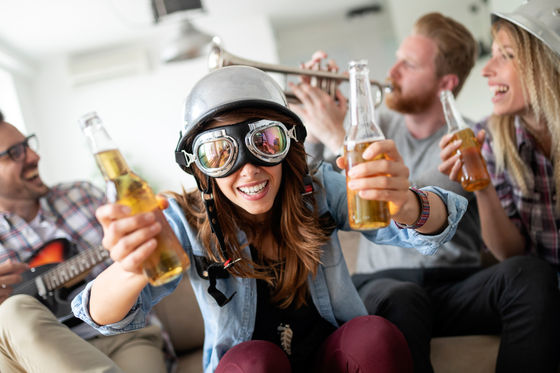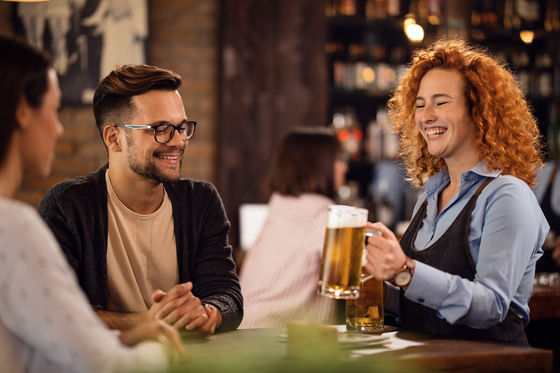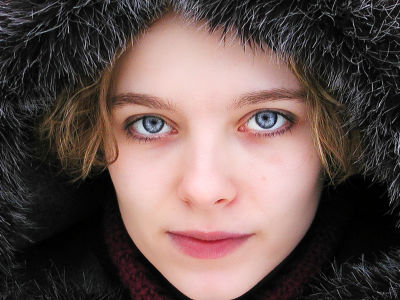Research results show that the cause of the ``beer goggle effect'' that makes people look more attractive when drunk is not because their faces look pretty

In manga and dramas, it's often the case that people become more attractive when they drink, and end up making mistakes that they regret the next morning. The theory behind
Impaired face symmetry detection under alcohol, but no 'beer goggles' effect - Alistair J Harvey, Ciara White, Kathleen Madelin, Ed Morrison, 2023
https://journals.sagepub.com/doi/10.1177/02698811231215592
Facial symmetry doesn't explain 'beer goggles' phenomenon, research shows
https://phys.org/news/2023-12-facial-symmetry-doesnt-beer-goggles.html
Previous research has shown that one of the factors that makes people look attractive is ``how well the left and right sides of the face match.'' In other words, the more symmetrical your face is, the better your gene pool will be.
However, drinking alcohol makes it difficult to notice facial asymmetry, which has been thought to be the reason why people look more attractive than usual when they drink alcohol.

Explaining why he chose this phenomenon as his research topic, Alistair Harvey, a psychologist at the University of Portsmouth in the UK, said, ``The reasons why drinkers are more likely to have sex include a lack of self-control, high expectations, and personality traits.'' , and the beer goggle effect.With limited research on the subject, we wonder why drunk people often end up having unexpected and regrettable sex. We decided to conduct a practical test to understand the basics.'
Mr. Harvey and his colleagues started the field test by visiting a local pub in Portsmouth and recruiting participants for the experiment. As a result, 99 men and women between the ages of 18 and 62 willingly volunteered their time.
Because of the topic of sexual attraction, when the research team asked participants about their sexual identity, 87% of participants said they were heterosexual, 9% of bisexuals, and 9% of homosexuals. This was followed by 3% and 1% of
The researchers then showed each participant photos of 18 faces and asked them to rate whether they looked attractive and symmetrical. The evaluation was conducted twice, the first time using a face photo with exaggerated asymmetry, and the second time using a natural face photo.
Below is one of the images used in the study, with a natural face on the left and an asymmetrical face on the right.

Participants were then shown two versions of the same face, one normal and one completely symmetrical, and asked which one they found more attractive and which one they found more symmetrical. In this multiple-choice question, participants were asked to compare a natural face (left) with a perfectly symmetrical face (right), with the rest of the face hidden from view.

The slightly roundabout method of showing multiple facial photos was used to collect ratings of each individual face, in addition to the usual binary approach of asking participants to choose which one is more attractive or symmetrical. This was to obtain more stable data.
A summary of the obtained data showed that, as expected, the drunker the person was, the less able they were to distinguish between a ``natural face'' and a ``perfectly symmetrical face,'' while the drunker the person was, the less able they were to distinguish between a ``natural face'' and a ``perfectly symmetrical face''. It turned out that it was not evaluated as such.
In addition, both men and women rated natural faces as more attractive than asymmetrically processed faces, but this tendency was stronger for women than for men. Additionally, women were found to be faster at judging attractiveness and symmetry than men.

While this study confirmed that alcohol consumption impairs people's ability to judge whether a face is symmetrical, as expected, it also showed that it does not make a person's face look more attractive. I did. The reason for this is not clear, but one possibility has been proposed: ``Many factors are involved in facial attractiveness, and these factors may outweigh the influence of symmetry.'' Masu.
Looking back on the study, Harvey said, ``While we do not deny the existence of the beer goggle effect, it may be easier to detect the effect using live models rather than photographs.'' 'More research will be needed to find the missing pieces of the puzzle, as images hide important visual criteria for attractiveness, such as size, body shape, height, facial expressions, and clothing.'
Related Posts:
in Science, Posted by log1l_ks







